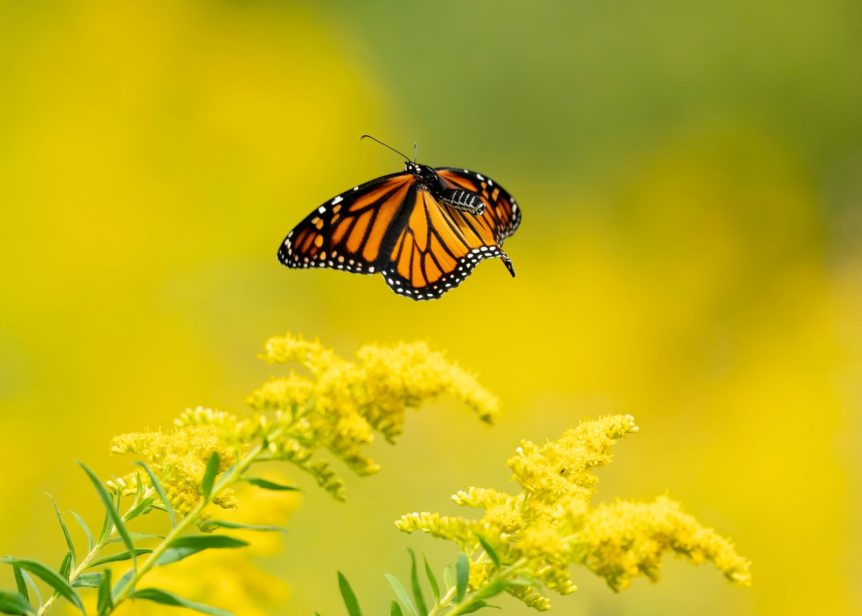How can we help Florida butterflies survive? Butterfly species across the Northern United States are decreasing in population at alarming rates. The Monarch butterfly, one of the most well-known species, has received the most attention as its spectacular migrations have noticeably fewer butterflies with every passing year. However, factors that are causing this decrease in Monarch population are taking a toll on many other species found throughout the United States.
Threats to Florida Butterflies Population
As scientists have spent more time trying to discover what is killing our Florida butterflies, they have identified several main factors. Unfortunately, but not surprisingly, all of these factors are directly related to human influences on our planet.
Decreased Habitat
As we continue our spread into untouched lands, we reduce the habitat for all species that call it home. Although this slow takeover of land will have an effect on all animals, including ourselves, we start to see the negative impacts on the small creatures first. As we remove native plants and replace them with manicured landscapes or worse completely cover the land in concrete, we eliminate the food source required by insects and animals to survive.
Pesticides
As monoculture has taken over the farming industry there are new challenges faced by farmers. With such large plots of identical plants, pests find them to be an easy target. To combat mass destruction of their livelihood, farmers have turned to newer, stronger, and more effective pesticides. These pesticides have grown in popularity and are no longer just used on a commercial scale. Backyard gardeners have also turned to these strong pesticides to keep their gardens thriving and pest free.
While these pesticides are effective, they are damaging to not only the targeted insects or weeds but to all others that come into contact with it, including Florida butterflies and the plants they need to survive.
Climate Change
Climate change has been more noticeable in recent years. Its effects are starting to be seen around the world and are affecting not only our comfort but all the species around us. The most notable decline in butterfly population has taken place in the western United States. This is because temperatures continue to rise, creating an environment that no longer supports some of nature’s most beautiful insects.
Florida Butterflies
Florida is home to many different species of native wildlife including butterflies. Although butterflies that call Florida home may not be facing all the same threats as those from western states, several species are dwindling and have even been added to the endangered species list. Researchers have discovered that Florida is home to nearly 200 species of butterflies, 60 of which are considered rare. These rare butterflies are under evaluation to determine if they should be considered endangered.
How to Create a Haven for Butterflies
For those gardeners who wants to help do their part in supporting native butterflies there are several steps you can take.
Provide Food
The first thing that will help attract and promote butterfly population is providing them with a food source. Planting a variety of flowers that bloom throughout the year can draw butterflies to your yard. Although different species of butterfly prefer different flowers there are a few favorites that are easy to find and plant.
- Bluebells
- Marigolds
- Lavender
- Clover
- Blackberry
Alternatively, you could take some time to research the types of Florida butterflies in your area and those that are most in danger. Then choose flowers and plants that will provide food and a place for them to lay their eggs.
Avoid Pesticides in the Garden
As we discussed earlier, pesticides are one of the leading causes of decline in butterfly population. Although they can be an easy way to take care of a small pest problem in your garden, they ultimately do more harm than good. Go to your local nursery and ask about natural alternatives to rid your garden of pests. You’d be surprised at how many options are available that keep your garden healthy and insect populations in balance.

